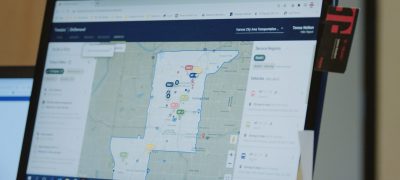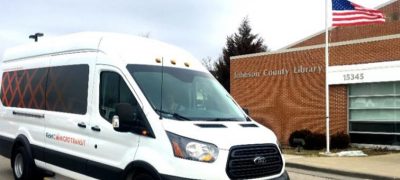Group Procurement of Real-Time Vehicle Information Software
- Date: January 28, 2022
In 2017, Valley Transit of Walla Walla, Washington, led the development of a group procurement opportunity for agencies in Southeast Washington and Northeast Oregon. The goal of this was to obtain real-time vehicle information, and to make that regionally available through a common platform so that passengers could see available trips across multiple systems. Nine systems have joined so far. The effort ultimately led to a strong model for obtaining technology in a way that benefits multiple agencies at the same time while leaving space to address their unique needs. Though it can be daunting, putting a significant amount of thought and work into a procurement up front can really help your agency down the line while deploying the technology.
In what Valley Transit considers a key component of its success, the RFP was structured so the vendor pitches the solution, instead of a common approach where agencies outline what they want and ask vendors to explain how they would deliver. This allowed more flexibility and showed which vendors understood the full breadth of the assignment, helping to select vendors by best value. To make the procurement accessible to neighboring transit agencies, Valley Transit structured the RFP to create a “shopping list” for the agencies to match their needs. This made it easier for partner agencies to join in a way that fit their needs: some just use the GTFS feed, others have the full suite of software and hardware from the vendor.
This approach does have some important considerations, since it shifts workloads from what agencies might be used to (a regular theme in new transit technology). In particular, this requires a lot of effort up front to research and structure the procurement, as well as facilitate other agencies joining. It’s very time-intensive in the beginning, but leads to less time spent maintaining the “shopping list”, on-boarding partners, and implementing the technology later on. If an agency has expertise on staff to handle the process, though, it preps the project so that staff can take it over relatively simply.
Even this more open procurement format does need to close eventually. When that time comes, the lead agency has to decide if they can continue using staff time for the procurement, or if they realistically will not have many more agencies join the effort. In this case, everyone who wants to sign up is already in, so it makes more sense for participating agencies to move forward with individual contracts.
It’s also possible that when the period of performance ends, the next procurement could lead to a different vendor. In order to account for this change, it’s a good idea to require standardized software, data, and API formats so that it isn’t difficult to transfer your work to a new vendor if need be. It’s also important to note that you’ll likely be working with a vendor that is not familiar with the local nuances of your area, such as cell phone service coverage. It is important to test them on their ability to address local conditions.
Despite being a highly successful procurement model, Valley Transit did have a few ideas for how to improve in the future. In the future it would make more sense to have all partner agencies on board before beginning the procurement process. This would have given a clearer picture for developing the shopping list, and the additional input may have identified some challenges that one perspective could overlook. That way, they can be addressed in the RFP so that the vendor would have to directly demonstrate their ability to address those issues.
There are a number of nuances and local considerations when structuring procurements like this, but using this as a starting point can guide groups of smaller transit agencies into procurement efforts that benefit the whole region that they serve. Those who are interested can learn more by contacting Valley Transit, reading our Framework for Successful Technology Decisions, or listening to our podcast episode on this topic with a partner agency.


